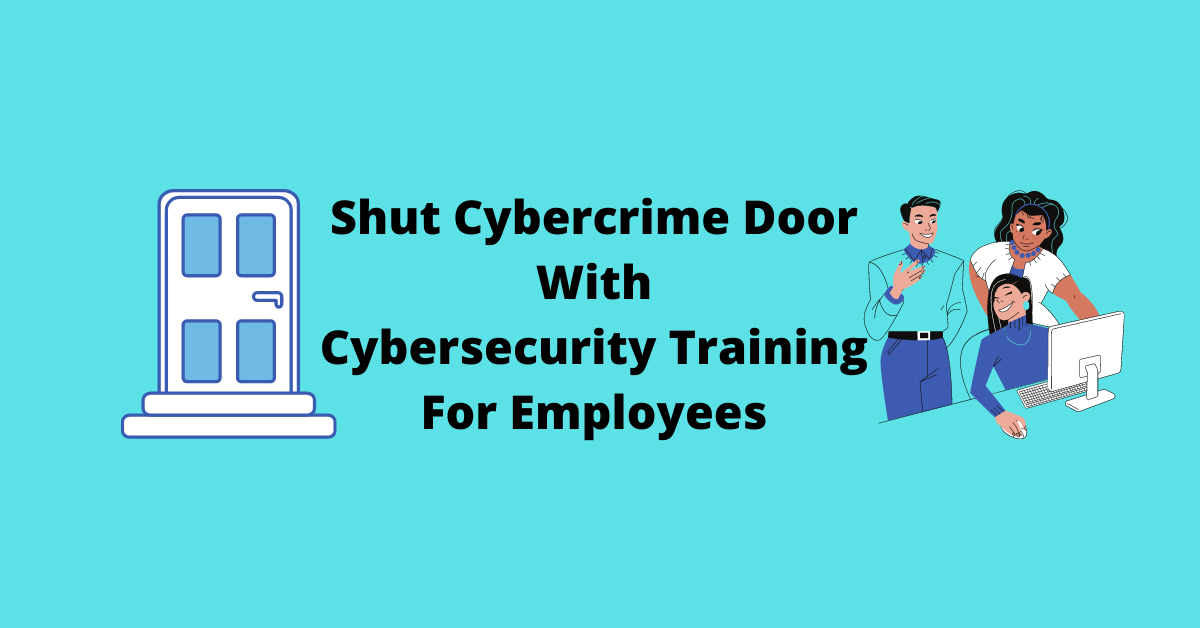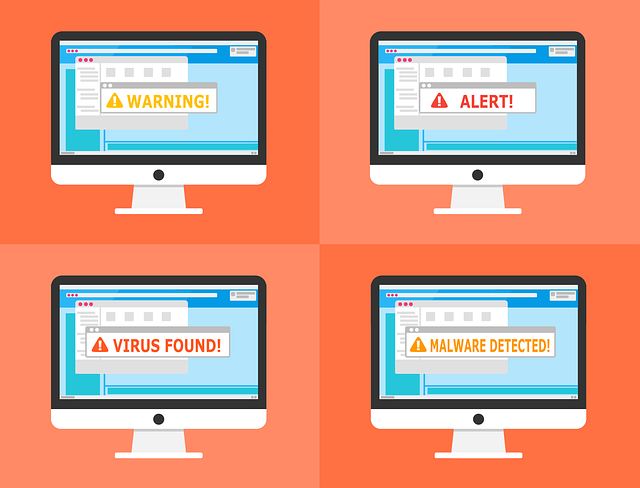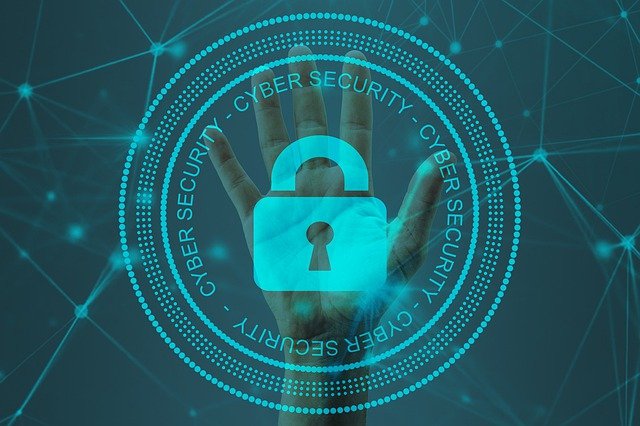In this post, we will reveal the objectives of a cybersecurity training program.
From careless staff to malicious insiders, an organization’s employees can be one of its biggest cybersecurity threats. The number of insider incidents globally reached 4,700 this year, with an overall cost of $11.45 million.
While 62% of insider incidents were caused by employee negligence, 23% of insider incidents were related to staff with malicious intent.
However, with the right cybersecurity training, an organization’s employees can become its strongest line of defense. In other words, employees who receive proper security awareness training can identify and prevent a potential cyber-attack or data breach.
Businesses can hire a Managed Services Provider (MSP) to train their employees in various aspects of cybersecurity and improve their network security.
Let’s look at how MSPs can help businesses enhance their IT security through a comprehensive cybersecurity training program for employees.
Table of Contents
Objectives Of A Cybersecurity Training Program
Identifying and Mitigating Different Types of Cybersecurity Threats
MSPs can train a company’s employees to identify the below-mentioned cybersecurity threats, among others:
Phishing
This type of social engineering attack is where cyber-attackers trick individuals into obtaining critical data such as passwords and usernames. Email and text messages are common means of initiating phishing attacks.
MSPs impart the following lessons through the cybersecurity training program to help employees identify a phishing attack:
- Never open emails from unfamiliar senders
- Always use a spam filter
- Refrain from clicking on suspicious links and attachments
- Always check the domain name in the email
- Watch out for grammatical errors, spelling mistakes, and poor formatting in an email, as these are the common tell-tale signs of malicious intent.
- Report and mark emails and text messages that create an unnecessary sense of emergency or ask for financial details as spam
Malware
This is malicious software that cybercriminals install on an individual’s device and try to gain unauthorized access to his/her sensitive information or cause extensive damage to the data and the device. Here’s what MSPs teach to help employees recognize and reduce the effect of a potential malware attack:
- Never click on pop-up messages
- Closely monitor files attached to emails and websites
- Always keep the device’s software updated
- Back up data regularly either to an external hard drive or the cloud
- Never download unauthorized software on devices
READ ALSO: The Ultimate Antivirus Software Guide: What Is An Antivirus?
2. Underlining the Importance of Password Security
Strong passwords can act as a robust barrier to cyber-attacks. A few important password security tips that MSPs suggest to employees include:
- Use strong and complex words in a password
- Avoid using the same password for different accounts
- Implement Multi-Factor Authentication (MFA)
- Never use Personal Identifiable Information (PII) such as credit card details and social security numbers as usernames or passwords.
- If the password is compromised, change it immediately and inform the concerned authority.
3. Practicing Safe Internet and Social Media Habits
One of the aims of the security training program is to encourage employees to incorporate healthy internet and social media habits such as:
- Recognizing suspicious or spoofed domains
- Understanding the difference between Hypertext Transfer Protocol Secure (HTTPS) and Hypertext Transfer Protocol (HTTP)
- Refraining from entering credentials and login information on untrusted websites
- Avoiding sharing personal details on social media platforms
READ ALSO: 5 Cybersecurity Tips For Small Businesses
4. Highlighting the Importance of Physical Security of the Business
Apart from training employees on cybersecurity practices, MSPs teach them to protect their organization from the following physical security threats:
Shoulder Surfing
This is a type of data theft where malicious insiders and visitors steal the employee’s personal or sensitive information by secretly observing them.
Employees can counter shoulder surfing by being vigilant and ensuring that nobody looks at their system as they type their password or other sensitive information.
Also, when asked to provide their personal information, such as social security or credit card number, they should write it on paper and not speak it out loud to prevent its theft through eavesdropping. The paper should then be shredded instantly.
Tailgating
This is a physical security breach where an unauthorized person follows an employee or any other staff of the organization and enters a highly secure area of the business based on that employee’s credentials.
Tailgating can lead to data theft while putting the organization’s property and employees at risk. Employees can prevent tailgating by incorporating the below-mentioned countermeasures:
- Employees should be aware of anyone following them through a restricted area of the business.
- They should immediately inform the concerned authority if they notice a suspicious individual on the company premises.
- They should ensure that physical security panels in the business’s premises, such as doors and locks, are working properly.
READ ALSO: Insider Risk Management Fundamentals: 10 Best Security Practices for Implementation
5. Incorporating a Robust Bring-Your-Own-Device (BYOD) Policy
With the BYOD (Bring Your Own Device) culture on the rise, many employees use their personal devices to store business and customer data and perform work-related tasks.
If not protected properly, these personal devices come with their own share of cybersecurity risks, including malware infiltration. MSPs develop a strong BYOD policy that covers the following objectives:
- Ensuring employees protect their devices through a strong password
- Incorporating the use of personal devices with full-disk encryption.
- Leveraging Virtual Private Network (VPN) set-up for personal devices
Once organizations deploy a proper security training program for employees, they should ensure that they update and repeat it regularly. It will develop a good habit of prioritizing cybersecurity in employees.
Furthermore, regular training will inform employees about the latest cybersecurity threats and enable them to proactively counter them.
However, if an employee does fall victim to a cybersecurity attack, organizations should refrain from criticizing him/her publicly. Instead, the employee should be allowed to learn from his/her mistakes. Also, organizations can use the case to create further cybersecurity awareness among other employees.
Furthermore, companies should make cybersecurity training mandatory for new employees. It will give them a clear idea that cybersecurity is important to the organization’s safety. This, in turn, will encourage them to be careful with their online behavior from the very beginning.
READ ALSO: A Beginner’s Guide to Navigating the World of Finance
Wrap Up
Employees play a critical role in strengthening the security of an organization.
So, instead of considering them the weakest security link, organizations should work towards transforming them into their greatest security asset through a strong security awareness training program. Alternatively, businesses can enroll their important staff members for cybersecurity online degrees.
In summary, businesses must implement a comprehensive security program that encompasses the objectives mentioned to help employees understand and effectively thwart potential cybercrime incidents.
SUGGESTED READINGS
- Most Effective Cybersecurity Strategy For A Small Business [We Asked 45+ Experts]
- Why Circuit Boards Matter in Business Security
- 5 Cybersecurity Tips To Protect Your Digital Assets As A Business
- How IT Professionals Can Monitor Remote Employees’ PCs Without Violating Privacy Laws
- Security Alert: The Most Common COVID-19 Online Frauds and Scams
- Cyber Security Or Physical Security – Which Should You Prioritize?
- What Should Security Awareness Training Include?
About the Author:
Chandra Palan is an Indian-born content writer, currently based in Australia with her husband and two kids. She is a passionate writer and has been writing for the past decade, covering topics ranging from technology, cybersecurity, data privacy and more. She currently works as a content writer for SecureBlitz.com, covering the latest cyber threats and trends. With her in-depth knowledge of the industry, she strives to deliver accurate and helpful advice to her readers.
Meet Angela Daniel, an esteemed cybersecurity expert and the Associate Editor at SecureBlitz. With a profound understanding of the digital security landscape, Angela is dedicated to sharing her wealth of knowledge with readers. Her insightful articles delve into the intricacies of cybersecurity, offering a beacon of understanding in the ever-evolving realm of online safety.
Angela's expertise is grounded in a passion for staying at the forefront of emerging threats and protective measures. Her commitment to empowering individuals and organizations with the tools and insights to safeguard their digital presence is unwavering.









